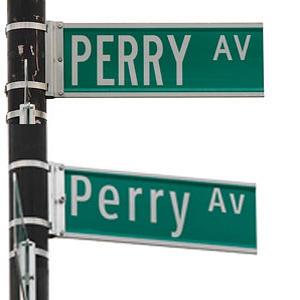
Cover page for the City Government's "Bed Bug Guide"
Bedbugs seem to be on the minds of every New Yorker these days, but, hysteria aside, public awareness is limited. Talk to any number of New Yorkers, from regular citizens to experts to city officials, and you’ll find their impression of the bloodsucking pests is filled with half-truths and vague assumptions.
Part of the reason for that is that not a whole lot is known about them. Even to scientists who study the critters, New York Times reported last month, they are a mystery:
Ask any expert why the bugs disappeared for 40 years, why they came roaring back in the late 1990s, even why they do not spread disease, and you hear one answer: “Good question.”
They are incredibly evasive. The apple-seed-sized Bedbugs are nocturnal, preferring to feed on humans at night under the cloak of an anesthetic they emit to numb any sting. When they’re not biting, they’re usually nestled away in some deep fabric, like a mattress or bedspring, or for more mobile means, on clothes and bags.
Indeed, many people with infested homes have never even seen them.
But there are some known facts about bedbugs and, more importantly, known ways to prevent and, if infested, get rid of them. As part of research I did for a story on bed bugs in New York city schools last week, I spoke to several exterminators and experts to help clear up the confusion.
According to the NYC private residence manual, titled “Preventing and Getting Rid of Bed Bugs” there are several basic maintenance steps to take, including:
- Seal cracks and crevices in the floors and on the walls with caulk.
- Regularly clean and vacuum in areas that gather dust and debris
- Get rid of clutter, to reduce the amount of places that bed bugs can borough
Another suggestion, which came from exterminator Elio Chiavola, is to buy a sealable mattress cloth cover, which can be bought for about $60 at Bed Bath & Beyond.
But as I learned from my reporting on bed bugs in schools, which revealed that last year there were more than 1019 confirmed cases of bedbugs in New York City schools, the problem doesn’t necessarily begin and end at home.
Schools, retails stores, office buildings and movie theaters aren’t natural habitat for bed bugs, mainly because it isn’t where people rest at night, but anywhere large masses of people gather are particular vulnerable areas. Bedbugs can jump from person to person when people bring them from infested homes.
From here, the pests hitch a ride home on clothing or bags.
“They are a major transfer point from one place to another,” said Mike Orlino, President of Superior Pest Elimination.
With that in mind there are some additional, more proactive things people can do to prevent them from even getting into the home in the first place.
Chiavola believes that every citizen should own their own personal supply of SteriFab, an alcohol-based spray that kills bugs on contact, any time you come and go from your apartment.
As a general rule, it’s wise to avoid purchasing used furniture, according to the New York City Bed Bug Advisory Board, which published a comprehensive report on the matter in July.
- Bed bugs don’t just live in beds. Wood or metal or plastic furniture, sofas, chairs, tables and many other household items may be infested with bed bugs.
- Used furniture and refurbished mattresses may have bed bugs and bed bug eggs that are difficult to see.
While the jury is still out on whether bed bugs are bound to officially take over the city (insert hysteria here!), hopefully these basic tips can at least help you avoid being their next victim.

